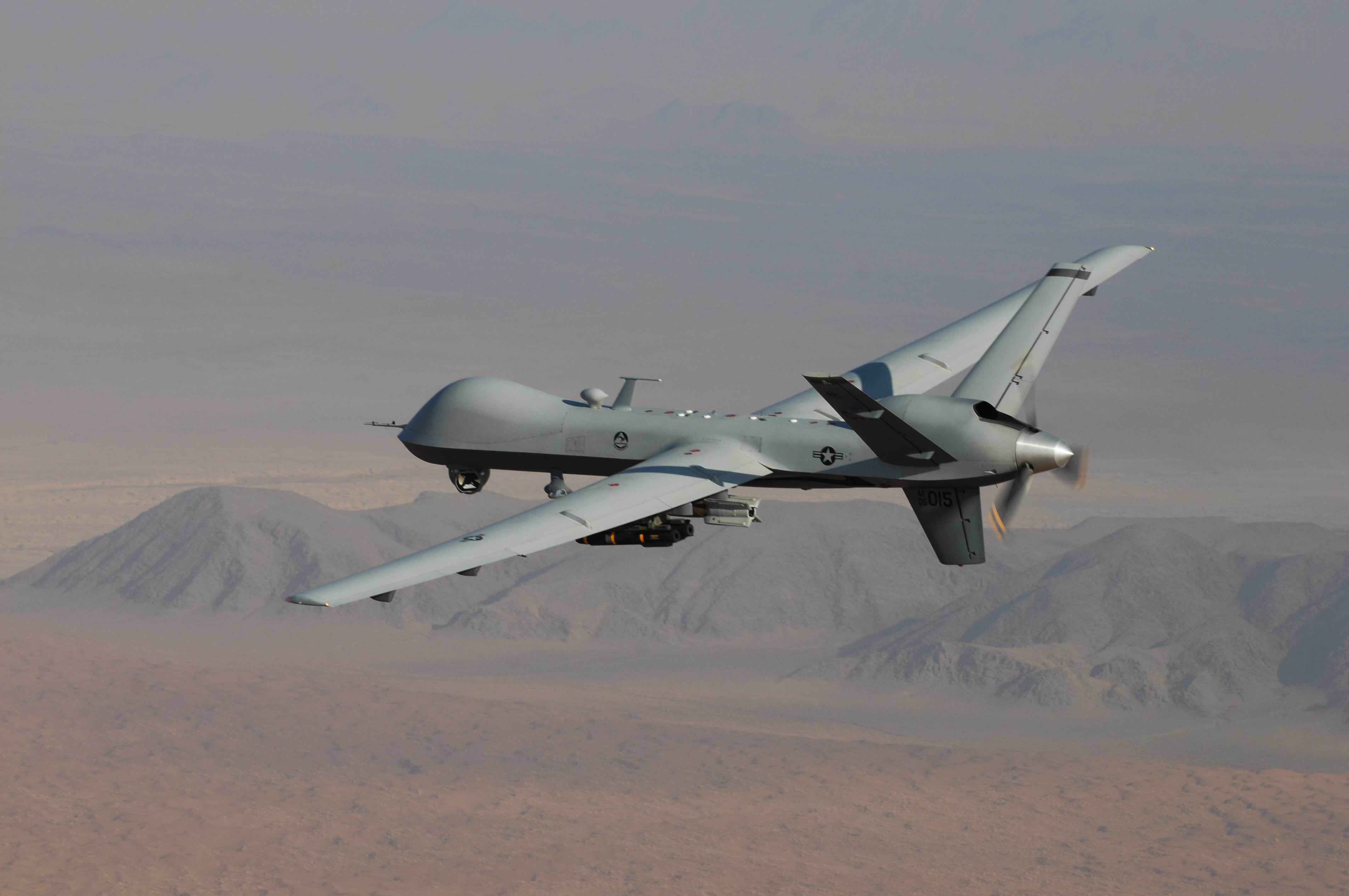President Trump Ponders Changes to the Lethal Force Policy Constraints: What You Need to Know
Are we about to see a significant shift in U.S. government policy relating to the use of targeted lethal force for counterterrorism purposes?
Maybe, according to an important article by Charlie Savage and Eric Schmitt in the New York Times. Here’s what you need to know:

Published by The Lawfare Institute
in Cooperation With

Are we about to see a significant shift in U.S. government policy relating to the use of targeted lethal force for counterterrorism purposes?
Maybe, according to an important article by Charlie Savage and Eric Schmitt in the New York Times. Here’s what you need to know:
1. This story is not about a change to the legal framework
This will not be a change to the U.S. position on the relevant legal architecture. The U.S. government’s position on the legal architecture for the post-9/11 conflict has remained remarkably consistent for the past 16 years and shows no signs of changing.
After 9/11, the Bush Administration took the position that the United States is engaged in an actual armed conflict—triggering the law of armed conflict—with: (1) al Qaeda; (2) the Afghan Taliban; and (3) (in a claim that arose a bit later) the associated forces of both those two–at least insofar as a particular “associated force” engages in hostilities with the U.S. or its coalition partners. It also took the position that this conflict has no geographic boundaries, though geographic legal constraints separately arose thanks to the independent considerations flowing from the U.N. Charter. And it further took the position that a combination of Article II authority and the 2001 AUMF provided the requisite domestic-law authorization for the resulting military operations. Notably, the U.S. understanding of the armed-conflict legal model included an interpretation that treated members of the aforementioned groups as combatants rather than civilians, thus making them targetable with lethal force so long as not hors d’ combat and so long as other LOAC considerations–particularly proportionality–were satisfied.
The Obama administration accepted almost all of this legal framework and defended it effectively throughout its eight years. In particular, it accepted and defended the claim of an armed conflict and the claim that the conflict had no inherent geographic boundary. It did eschew public emphasis on Article II–though without actually denying Article II’s supplementary relevance)–in favor of an emphasis on the 2001 AUMF, but this had no practical impact on military and CIA operations.
2. The story is about a change to the policy framework
In May 2013, the Obama administration announced it was adopting a significant-sounding set of new policy constraints limiting the extent to which the government would take advantage of the targeting discretion it otherwise enjoyed under color of its interpretation of the law of armed conflict. Critically, the new policy applied only as to geographic locations that did not count as “areas of active hostilities.” In such locations, the new policy provided for the following constraints above and beyond the limitations of the law of armed conflict, the U.N. Charter, and so forth:
[L]ethal force will be used outside areas of active hostilities only when the following preconditions are met:
First, there must be a legal basis for using lethal force, whether it is against a senior operational leader of a terrorist organization or the forces that organization is using or intends to use to conduct terrorist attacks.
Second, the United States will use lethal force only against a target that poses a continuing, imminent threat to U.S. persons. It is simply not the case that all terrorists pose a continuing, imminent threat to U.S. persons; if a terrorist does not pose such a threat, the United States will not use lethal force.
Third, the following criteria must be met before lethal action may be taken:
- Near certainty that the terrorist target is present;
- Near certainty that non-combatants will not be injured or killed;
- An assessment that capture is not feasible at the time of the operation;
- An assessment that the relevant governmental authorities in the country where action is contemplated cannot or will not effectively address the threat to U.S. persons; and
- An assessment that no other reasonable alternatives exist to effectively address the threat to U.S. persons.
Finally, whenever the United States uses force in foreign territories, international legal principles, including respect for sovereignty and the law of armed conflict, impose important constraints on the ability of the United States to act unilaterally – and on the way in which the United States can use force. The United States respects national sovereignty and international law.
Note: The Obama administration did eventually release a redacted version of the “playbook,” here.
3. Well, in what locations did this set of policy constraints apply?
Obviously, the impact of this new policy would turn in no small part on the definition of the phrase “areas of active hostilities.” Or I should say, implementation of the phrase, for it is not actually a legal phrase-of-art with its own clear meaning (though the words obviously connote some significant degree of ongoing military activity). At any rate, it eventually became clear that the administration understood Afghanistan (and, then later, also Iraq and Syria) as an “area of active hostilities,” whereas operations in other locations like Somalia, Yemen, Pakistan, and Libya were meant to be subject to the new policy constraints.
Or at least that would be the default rule. When U.S.-supported local forces in Libya needed U.S. air support in evicting IS fighters from Sirte, the Obama administration simply designated the surrounding areas as an “area of active hostilities” for the time needed, and the policy constraints dropped out accordingly. From that point of view, the Trump administration’s earlier determination to extend the “active hostilities” label to Somalia was somewhat less of a departure from his predecessor’s policy than might otherwise seem to be the case.
4. Did the policy constraints really have bite?
In some respects, probably so. For example, it seems quite likely to me that the requirement of near-certainty that there will be no collateral damage–which contrasts sharply with the LOAC rule permitting collateral damage so long as not disproportionate to the military advantage gained from an attack–had some significant impact in limiting the circumstances in which force could be used.
The practical impact of the other elements that one might think would have bite—particularly the requirement that the target be someone posing a “continuing, imminent threat to U.S. persons”—is much less clear than you might expect. A person unfamiliar with the “imminence” question in the counterterrorism setting might reasonably assume it means, literally, strict-temporal imminence connecting the person’s prospective violence to a U.S. person. However, various airstrikes in Somalia, while it was still not considered to be an area of active hostilities, raised questions about whether that particular constraint might have been construed in a way that made it less constraining than one might expect.
5. Did the policy also require White House approval for strikes outside areas of active hostilities?
The quoted language above does not include such an element, but my understanding is that high-level approval nonetheless was an important part of the policy constraint system for locations that were not areas of active hostilities, just as it turned out to be even for areas like Afghanistan. (See, for example, this episode of the National Security Law Podcast, in which Steve Vladeck and I discussed the rise-and-fall of requirements for top-level approval for certain airstrikes in Afghanistan). I mention this here because, as noted below, an important part of the new story about the Trump administration’s plans has to do with this question of who has to approve an airstrike. The important point being: Approval-constraints on field commanders was indeed an important element of Obama administration policy, whether they were derived from the May 2013 “playbook” or otherwise.
6. Ok, enough already: what does the NY Times story say is about to change?
Thanks for sticking with me; context is important!
Charlie and Eric report that President Trump is poised to change some—but not all—of the aforementioned policy constraints. We learn that the National Security Council Principal’s Committee last Thursday last week recommended to the President that he adopt the “P.S.P.” (acronym for “Principles, Standard, and Procedures”) as a revision to the 2013 Obama playbook. It seems the P.S.P. would include at least two specific changes to the policy constraints on lethal force outside of areas of active hostilities.
First, the “continuing, imminent threat” to U.S. persons standard would be altered in a manner that would more clearly permit attacks on “foot-soldier” types. This could have a significant practical impact (though it’s worth recalling the Raso camp airstrike in Somalia under the original policy, which certainly targeted lots of “foot-soldier” types). My rough sense of it is that Raso was a not-so-easily approved stretch under the old policy and that it really would matter to some extent if it no longer were necessary for the proponent of a strike to show that the continuing, imminent threat standard applied.
Second, proposals for such attacks “would no longer undergo high-level vetting” in some circumstances. The article quotes an official as explaining that a key aim of the P.S.P. is to eliminate the Washington-based “bureaucracy” that, under the 2013 Playbook, oversaw decisions to attack. That said, the article also notes that top-level approval still would be required before lethal force could be used for the first time in a new geographic location.
Interestingly, however, the story also emphasizes that officials are not recommending a change to at least some other parts of the Obama policy. In particular, the draft P.S.P. would keep in place the policy requirement of attacking only where it appears there is almost no chance of collateral damage. That’s rather remarkable in my view, and probably will surprise many observers. Of course, it remains to be seen if that element will survive into the final product.
Stay tuned!




